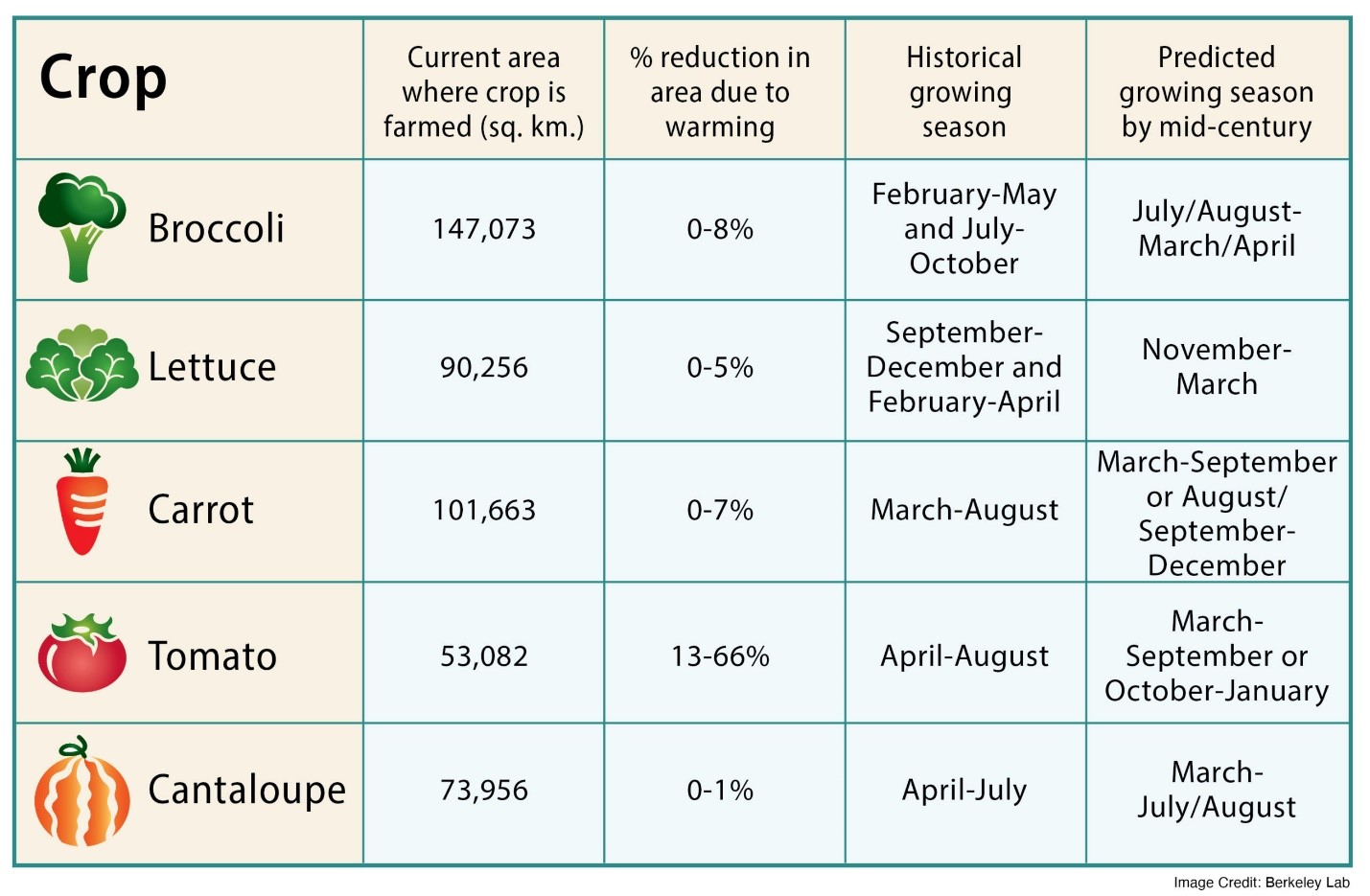A new study projects that estimated air temperature increases may require shifts in the growing season of cool-season crops and the growing locations of warm-season crops. However, there could be some ways to mitigate these potential challenges through practices like irrigation, which may be able to reduce some negative heat effects on crop temperatures.
New research from Lawrence Berkeley National Laboratory shows that by the year 2049, future temperatures will have more of an effect on when cool-season crops, such as broccoli and lettuce, can be grown than on where. For warm-season crops (cantaloupe, tomatoes, carrots), the impact will be greater for where they can be grown versus when.
The scientists paired computer modeling with information about historic and ideal growing temperatures for five important California crops in their paper, “Projected temperature increases may require shifts in the growing season of cool-season crops and the growing locations of warm-season crops,” which appeared in the journal Science of the Total Environment earlier this month.
“To ensure food security for California and the rest of the country, it’s important to predict how future warming will affect California agriculture,” said the paper’s lead author Alison Marklein. “We need reliable information about how future climate conditions will impact our crops in order for the agricultural system to develop an adequate response to ensure food security. For instance, one major challenge when considering relocating crops is that growers have specialized knowledge of their land and crops. If crops can no longer be grown in their current locations, then the farmer has to either move to a new area or grow a different crop, which presents a practical and economic burden on the farmer.”
In carrying out the study, the researchers first selected five annual crops that are produced in California more than any other state: lettuce, broccoli, carrots, tomatoes, and cantaloupe. These nutrient-dense crops contributed 64% of the state’s cash value of vegetable and melon crops in 2016 and are essential to food security, as evidenced by their place among the top vegetables and fruits donated to four California food banks, which were part of a separate study.
The team then obtained 15 years of air temperature data beginning in 1990 from locations across the state, as well as information about crop temperature thresholds – or maximum and minimum air temperatures beyond which crop failure occurs – and growing locations for each of the five crops going back seven years. They also considered a crop’s optimal growing-season length: for example, broccoli requires four consecutive months of minimum 39 degrees Fahrenheit and maximum 95 degrees.
“We found differences in how warmer temperatures will affect the cool-season crops versus the warm-season crops,” Marklein said. “For cool-season crops like broccoli and lettuce, it may be possible to extend their growing seasons. But it may become too warm to grow warm-season tomatoes where they have been historically farmed in summer, and may require moving them to milder climates warm enough for growing tomatoes under the new climate scenarios.”
The team found that both cool-season crops, broccoli and lettuce, are currently grown nearer to their lower temperature thresholds during fall and spring. The climate models predict an increase in winter temperatures above the minimum temperature threshold for both crops, suggesting that by mid-century these crops could also be grown into winter, even in areas where they have not historically been grown.
Marklein said this study gives agricultural planners a lot to think about. “This is really a first step in planning for future climate scenarios. This work could be used to help prioritize resources like cropland and water to maximize agricultural productivity and food security,” she said.

Researchers compared how future warming will impact where and when five California crops can be grown. (Graphic credit: Berkeley Lab)


